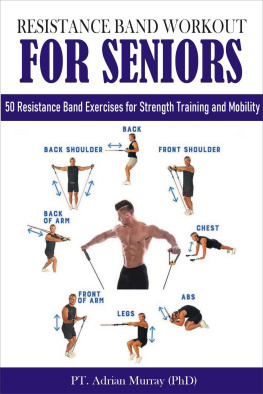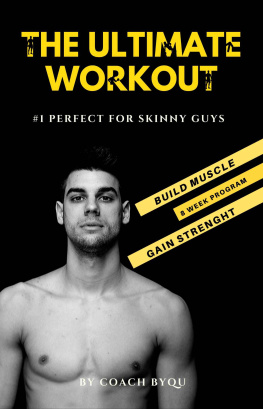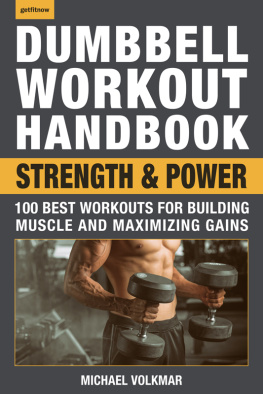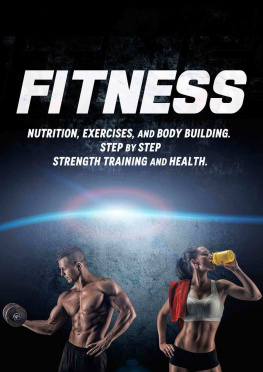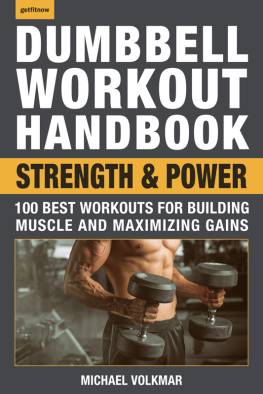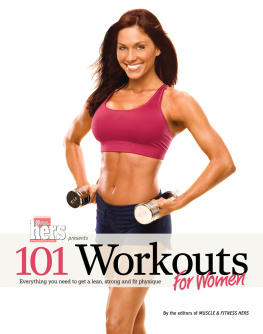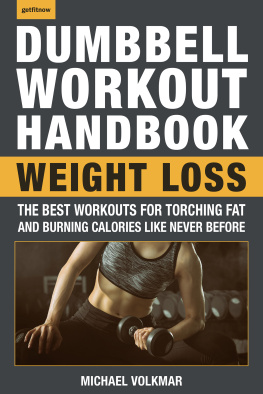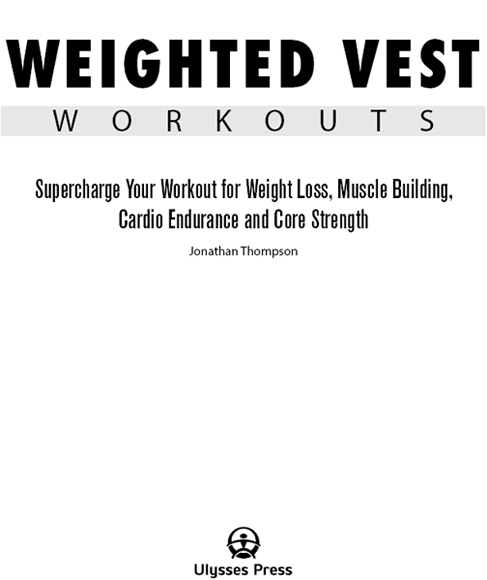
Text copyright 2015 Jonathan Thompson. Design and concept copyright 2015 Ulysses Press and its licensors. Photographs copyright 2015 Rapt Productions except as noted below. All rights reserved. Any unauthorized duplication in whole or in part or dissemination of this edition by any means (including but not limited to photocopying, electronic devices, digital versions, and the Internet) will be prosecuted to the fullest extent of the law.
Published in the United States by
Ulysses Press
P.O. Box 3440
Berkeley, CA 94703
www.ulyssespress.com
ISBN: 978-1-61243-428-5
Library of Congress Control Number 2014943045
10 9 8 7 6 5 4 3 2 1
Acquisitions: Keith Riegert
Managing editor: Claire Chun
Editors: Lily Chou, Lauren Harrison
Proofreader: Renee Rutledge
Indexer: Sayre Van Young
Front cover/interior design: what!design @ whatweb.com
Layout: Jake Flaherty
Front cover photographs: studio Kjetil Kolbjornsrud/shutterstock.com; man with vest Scott E. Whitney
Models: Nadia Brunner-Velasquez, Jadson Souza, Jonathan Thompson
Please Note: This book has been written and published strictly for informational purposes, and in no way should be used as a substitute for consultation with health care professionals. You should not consider educational material herein to be the practice of medicine or to replace consultation with a physician or other medical practitioner. The author and publisher are providing you with information in this work so that you can have the knowledge and can choose, at your own risk, to act on that knowledge. The author and publisher also urge all readers to be aware of their health status and to consult health care professionals before beginning any health program.
This book is independently authored and published. No sponsorship or endorsement of this book by, and no affiliation with other weighted vest, or any other trademarked brands or products mentioned or pictured, is claimed or suggested. All trademarks that appear in this book belong to their respective owners and are used here for informational purposes only. The author and publisher encourage readers to patronize the quality brands and other products mentioned and pictured in this book.
CONTENTS

Ive always preferred working out by myself, with no partner or spotter or lifting buddy. Admittedly, thats not totally advisable. That time is sacred, though. Its my Zen. One night, I managed to catch the gym at the rare golden hour. I had the entire place to myself. Which also meant that no one could hear me scream.
The evening in question was chest day, and I was slowly working toward bumping up my bench press goal. I had been steadily adding on teensy little weight plates for weeks, and this night was the night. I was going to do it. The bar went up easily enough and hung there for a second, like the rusted blade of a guillotine waiting to strike. Without warning, my right shoulder gave out. Again, Ill remind you that I was totally alone.
For whatever reason, that shoulder has always been a weak point for me. It generally gives me some trouble in the unassuming form of persistent dull aches, but this was the first time I had ever really felt like it had put me in danger. Thankfully, I managed to get the bar back into the rests without breaking any ribs, but the experience left me a little gun-shy.
A few weeks later, I moved to the country and no longer had access to a gym. While there were a few gyms nearby, I just didnt want to give them my money. Their rates were too high to make up for the subpar, poorly maintained equipment, and I couldnt justify the expense, especially when I had plans to eventually construct a home gym. All of these factorsthe injury, the moveled me to an important conclusion: It was time to give body-weight training some serious attention. After all, this particular training modality had just made the American College of Sports Medicines list of fitness trends a few months before these life-changing events. As a personal trainer, I figured I had a professional responsibility to at least give it a try.
I knew that body-weight training brings with it a much lower risk of injury than traditional weight training because it makes use of your bodys natural mechanics. For the most part, the movements in a body-weight routine are things you do almost every day, but theyre distilled to focus on specific muscle groups.
GETTING BACK TO BASELINE
Body-weight training is all about getting yourself back to baseline. Barring any serious health conditions, your body wants to be healthy. Everything in you wants to be lean and strong because thats where the human body functions optimally. But we dont live or eat the way that our bodies are supposed to. We sit for hours a day. Our food is delivered to us in neat little boxes and chock-full of additives that we cant pronounce and dont understand. By using your own body as your primary source of resistance, youre training yourself to move naturally and giving your body a chance to be exactly what it has always wanted to be. This means that you will be muscularly proportionate and strong in the way that works best for your body.
So, as is my approach to everything, I started doing insane amounts of research, and I found that, overall, body-weight training looked like a great move for me. There was just one problem, though: Its pretty challenging to make significant gains in size and strength once you reach a certain point with body-weight movements. I mean, those push-ups might be nearly impossible for you at first, but after a few months they wont really be an issue any more. So how do you make them more difficult? There are progressions, of course. You can gradually tweak the intensity of your workout and the position of your body to make the push-up more and more challenging, but youre still going to hit a wall eventually. After all, doing 100 push-ups is great for endurance, but it wont do much for actual strength.
The advantage that traditional weight training has in this respect is that, when an exercise becomes too easy, you can just slap another plate or two on the bar. Just like that, the exercise is harder. How do you do that with your body weight?
With this problem in mind, why did I decide to make the switch to body-weight training? More importantly, why should you?
Because I found the answer to be so simple and eye-opening: wearable weights. Ive collected all my academic and personal research in these pages to show you that you dont need that expensive gym membership or traditional weight-training equipment. To take your fitness to the next level and reach your goals, youll need nothing but your own body and a few simple pieces of equipment. Whether youre new to a workout routine or have years of training under your belt, the best part of the workouts in this book is that they refocus you. Theres no competition here, no outside stimulus matters. Youll learn how to use your body to improve your body.
If body-weight training is so awesome, why are we adding weights to it? Well, body-weight training has its clearly defined limits. Namely, you. If youre only using your body as resistance, then youll eventually hit a wall. To bypass this roadblock, we add weights. The beauty of these wearable weights is that you get the best of both worlds. You can gradually add more weight just like you would at the gym with traditional strength training while still working out at home with natural movements.
Next page


